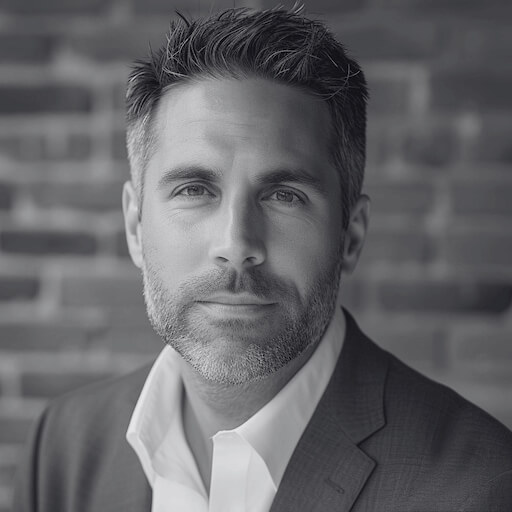Oregon Child Abuse Statistics 2023: Facts about Child Abuse in Oregon reflect the current socio-economic condition of the state.

LLCBuddy editorial team did hours of research, collected all important statistics on Oregon Child Abuse, and shared those on this page. Our editorial team proofread these to make the data as accurate as possible. We believe you don’t need to check any other resources on the web for the same. You should get everything here only 🙂
Are you planning to start an Oregon LLC business in 2023? Maybe for educational purposes, business research, or personal curiosity, whatever it is – it’s always a good idea to gather more information.
How much of an impact will Oregon Child Abuse Statistics have on your day-to-day? or the day-to-day of your LLC Business? How much does it matter directly or indirectly? You should get answers to all your questions here.
Please read the page carefully and don’t miss any words.
On this page, you’ll learn about the following:
Top Oregon Child Abuse Statistics 2023
☰ Use “CTRL+F” to quickly find statistics. There are total 15 Oregon Child Abuse Statistics on this page 🙂Oregon Child Abuse “Latest” Statistics
- 3 times as many children endure abuse and neglect as are reported to child protective service agencies, according to the fourth national incidence study of child abuse and neglect 2010, a study that was financed by the federal government.[1]
- 37.7% of women and 31.1% of men in our community experienced child abuse and neglect 10,0000 adults now reside in lane county.[1]
- According to statistics from Oregon in 2018, family members committed child abuse in 93% of instances.[2]
- 86% of Lane County residents feel that we can greatly decrease child abuse and neglect in our community and want to assist.[1]
- According to official records, Benton County had 105 established incidents of child abuse in 2019 out of 574 reported cases, a little increase from the 103 found cases in 2018.[2]
- Just 76% of Alaskan children are reported to child welfare before their first birthday, compared to 11% of Oregon children, this may be especially relevant in the first year of life.[3]
- Child abuse and neglect happen among people of all incomes and are higher among people living with the stress of financial pressure which is why the child abuse rate in lane county is 23.0% for those with earnings above 75,000.[1]
- Three times as many children endure abuse and neglect as are reported to child protective service agencies, according to the fourth national incidence study of child abuse and neglect 2010, a study that was financed by the federal government.[1]
- The ethnicity with the most child abuse victims in Oregon is white children, which comprises 59.18% of all child abuse cases reported in Ohio from 2016 – 2020.[1]
- According to data, an average of 0.72% of children in foster care were maltreated in Oregon from 2016 – 2020.[1]
- In the year 2020, there’s a total of 1,043 children waiting for adoption in Oregon.[1]
- Neglect is the most common form of child maltreatment in Oregon, which comprises 54.7 % of all child abuse cases in the years 2016 – 2020.[1]
Oregon Child Abuse “Abuse” Statistics
- The department of human services also said in a press release that it received more calls reporting suspected abuse or neglect than it did in 2020, with around 46% of 175,000 calls to the hotline being reports of such suspicions.[4]
- 2019 saw an increase in complaints to 89,451, of which 42.3% were classified as neglect, 39.9% as harm threat, 98% as physical abuse, and 65% as sexual abuse.[1]
- In Oregon, the two largest categories of abuse are neglect and threat of harm which account for more than 82% of all abuse cases in the state.[5]
Also Read
- Alaska Child Abuse Statistics
- Arizona Child Abuse Statistics
- Arkansas Child Abuse Statistics
- California Child Abuse Statistics
- Colorado Child Abuse Statistics
- Connecticut Child Abuse Statistics
- Florida Child Abuse Statistics
- Georgia Child Abuse Statistics
- Illinois Child Abuse Statistics
- Indiana Child Abuse Statistics
- Iowa Child Abuse Statistics
- Kansas Child Abuse Statistics
- Kentucky Child Abuse Statistics
- Louisiana Child Abuse Statistics
- Maine Child Abuse Statistics
- Maryland Child Abuse Statistics
- Michigan Child Abuse Statistics
- Minnesota Child Abuse Statistics
- Montana Child Abuse Statistics
- Nebraska Child Abuse Statistics
- Nevada Child Abuse Statistics
- New Hampshire Child Abuse Statistics
- New Jersey Child Abuse Statistics
- New York Child Abuse Statistics
- North Dakota Child Abuse Statistics
- Ohio Child Abuse Statistics
- Oregon Child Abuse Statistics
- Rhode Island Child Abuse Statistics
- South Carolina Child Abuse Statistics
- South Dakota Child Abuse Statistics
- Tennessee Child Abuse Statistics
- Texas Child Abuse Statistics
- Utah Child Abuse Statistics
- Vermont Child Abuse Statistics
- Virginia Child Abuse Statistics
- Washington Child Abuse Statistics
- West Virginia Child Abuse Statistics
- District of Columbia Child Abuse Statistics
How Useful is Oregon Child Abuse
One key aspect of addressing child abuse is early identification and reporting. Oregon has mechanisms in place for mandatory reporting of suspected cases of child abuse by certain professionals, such as teachers, healthcare providers, and law enforcement personnel. While this is a crucial tool in ensuring that child abuse is not allowed to fester behind closed doors, the question remains: are we doing enough to encourage community members to report suspected cases of abuse?
Education is another critical component in preventing child abuse. Oregon has various programs and initiatives aimed at educating parents and caregivers on positive parenting techniques, child development milestones, and the warning signs of abuse. However, there is always room for improvement in terms of the reach and effectiveness of these programs. Are we adequately equipping parents and caregivers with the knowledge and skills they need to provide a safe and nurturing environment for children?
Furthermore, the issue of support services for families affected by child abuse cannot be overlooked. Oregon offers various resources for families in crisis, such as counseling, parenting classes, and support groups. These services are vital in helping families heal and rebuild after experiencing abuse. However, there are often barriers to accessing these services, such as lack of awareness, stigma, or logistical challenges. How can we make these valuable resources more accessible to those who need them most?
Child abuse prevention is a complex and multifaceted issue that requires a comprehensive and coordinated approach. It is not enough to simply address the immediate symptoms of abuse; we must also work to address the underlying factors that contribute to abuse in the first place. Poverty, substance abuse, mental health issues, and domestic violence are just a few of the factors that can increase the likelihood of child abuse occurring. Efforts to support families in overcoming these challenges are crucial in breaking the cycle of abuse.
In conclusion, the fight against child abuse is an ongoing and evolving battle, and Oregon, like all states, must continue to work diligently to protect its most vulnerable residents. While progress has been made in terms of prevention, identification, and intervention, there is always more work to be done. By increasing awareness, improving access to services, and addressing the root causes of abuse, we can create a safer and more nurturing environment for all children in Oregon. It is our collective responsibility to ensure that every child has the opportunity to grow up in a loving and supportive environment, free from the fear of abuse.
Reference
- 90by30 – https://90by30.com/the-research/
- corvallisadvocate – https://www.corvallisadvocate.com/2020/recent-child-abuse-stats-dont-tell-full-story/
- hhs – https://www.acf.hhs.gov/opre/report/replicating-alaska-longitudinal-child-abuse-and-neglect-linkage-alcanlink-methodology
- pamplinmedia – https://pamplinmedia.com/fgnt/36-news/535201-428435-oregon-child-abuse-hotline-saw-uptick-in-calls-in-2021
- ocid-cebp – https://www.ocid-cebp.org/outcome/child-maltreatment-early-childhood/
- hhs – https://cwoutcomes.acf.hhs.gov/cwodatasite/pdf/oregon.html
- kidscount – https://datacenter.kidscount.org/data/tables/2567-children-who-were-victims-of-abuse-neglect-per-1000
- childrensdefense – https://www.childrensdefense.org/policy/resources/soac-2020-child-welfare-tables/
